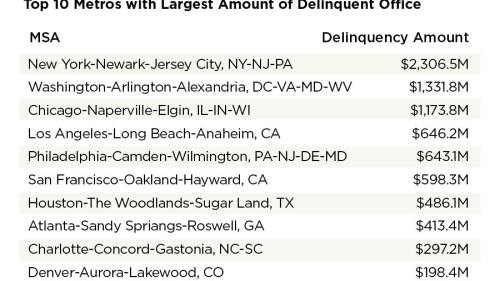Dallas-Fort Worth
Dallas-Fort Worth is one of the fastest-growing commercial real estate markets in the United States/North America. Dallas and Fort Worth are home to ground-breaking industrial, hotel, mixed use, multifamily, and transit-oriented developments. The NBA's Dallas Mavericks, NFL Cowboys, and Stars of the NHL all play professionally in the city, in addition to the MLB's Texas Rangers in nearby Arlington. College sports are also popular in this area with Southern Methodist University and Texas Christian University both in the area.
In 2025, the country’s industrial market is experiencing a rebalancing in the wake of surging demand and record new supply that marked the early pandemic years. New opportunities in fast-growing markets are emerging, and demand drivers are shifting. New space demand will grow the most, especially for small-bay industrial assets, according to a Q3 2025 report from the business advisory and accounting firm Plante Moran.
Around the turn of the 21st century, downtown Kansas City, Missouri, faced challenges familiar to many American cities: abandoned buildings and surface parking lots filled 10 core blocks despite multiple redevelopment attempts dating to the 1960s. The downtown residential population was sparse, and some 60,000 downtown office workers made haste for the suburbs at 5 o’clock each weekday.
Drawing on insights from more than 1,700 leading real estate investors, developers, lenders and advisors across the U.S. and Canada, the report identifies key opportunities, risks and market shifts that will shape the industry in the coming year.
Since the 1980s, the Dallas suburb of Plano has attracted some of the country’s biggest corporate headquarters and established itself as a hub for major employers. But how did Plano revamp to meet the goals of a changing economy and a changing community? The city made a pivot that has been echoed in growing cities around the country: a major shift toward investing in parks and activating green space.
A team of ULI experts visited Fort Worth in September 2024 to develop anti-displacement strategies for the city’s historic, majority Hispanic Northside neighborhood, which faces mounting pressure from two nearby megadevelopments, as well as broader metropolitan growth trends that drove up the area’s property values 60 percent from 2016 to 2021.
From resilient parks to bold adaptive reuse, this year’s winners redefine urban innovation and community impact across the Americas
Released during the Institute’s 2024 Fall Meeting in Las Vegas, Emerging Trends in Real Estate® North America predicts Dallas-Fort Worth, Miami as leaders in 2025
Real estate market participants are in the midst of a “Great Reset” when it comes to adjusting views related to pricing, risk, and return expectations in an environment marked by higher interest rates and slower economic growth. The need to align thinking and strategies to fit current market dynamics is one of the key themes in the 2024 Emerging Trends in Real Estate forecast for the United States and Canada.
ULI’s new report shares promising examples of efforts to reconnect communities divided by highway infrastructure.
Many office property owners are heading for the exits amid weaker demand and looming debt maturities, while opportunistic private equity groups are leaning in to capture what could be once-in-a-generation buying opportunities.










